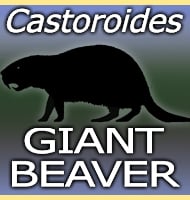Megaleptictis
In Depth A relative of the more famous Leptictidium, Megaleptictis is perceived to have been a small insectivorous mammal that roamed around the forest floors of Eocene North America. Further Reading - New large leptictid insectivore from the Late Paleogene of South Dakota, USA. - Acta Palaeontologica Polonica - Tj Meehan & Larry D. Martin … Read more
